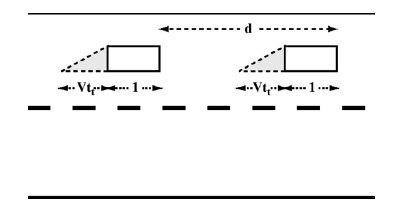
Pedestrians are mainly exposed to the risk of road accident when crossing a road in urban areas. Traditionally in the road safety field, the risk of accident for pedestrian is estimated as a rate of accident involvement per unit of time spent on the road network. The objective of this research is to develop an approach of accident risk based on the concept of risk exposure used in environmental epidemiology, such as in the case of exposure to pollutants. This type of indicator would be useful for comparing the effects of urban transportation policy scenarios on pedestrian safety. The first step is to create an indicator of pedestrians’ exposure, which is based on motorised vehicles’ “concentration” by lane and also takes account of traffic speed and time spent to cross. This is applied to two specific micro-environments: junctions and mid-block locations. A model of pedestrians’ crossing behaviour along a trip is then developed, based on a hierarchical choice between junctions and mid-block locations and taking account of origin and destination, traffic characteristics and pedestrian facilities. Finally, a complete framework is produced for modelling pedestrians’ exposure in the light of their crossing behaviour. The feasibility of this approach is demonstrated on an artificial network and a first set of results is obtained from the validation of the models in observational studies.
| ID | pj27 |
| Manuscript | |
| DOI | |
| Tags | pedestrians, statistical modelling, traffic management, urban mobility |






